In essence, business is about creating and keeping connections with people. The same could be said for the internet. As such, implementing a WordPress email subscription plugin could kill two birds with one stone.
For example, with a prominent signup form on display, visitors to your site can keep in touch. Of course, you’ll also contact them too. You could also use an email marketing platform to achieve the same goal. As such, choosing a solution will be a key concern.
This post will begin by explaining the difference between on- and off-site platforms, and their pros and cons. Then, we’ll run through how to implement both approaches, and try to help you decide whether to install a WordPress email subscription plugin.
Why Should You Run a Newsletter at All?
In a nutshell, online businesses won’t get very far without a marketing strategy. In fact, you could argue that how a business decides to win traffic, customers, and repeat purchases is more important than almost everything else.
Given this, there are a number of channels you could leverage to seek out potential customers. For example, social media is a large driver of traffic and qualified leads.

However, collecting email addresses in order to send out regular newsletters is not usually a ‘first-ballot’ tactic for many online businesses.
In our opinion, this is a mistake. Here’s why:
- A signup to your newsletter has already qualified themselves. This automatically pushes them through parts of your sales funnel.
- You keep access to the email addresses you collect, regardless of the platform you choose for your newsletter. This is in contrast to any social media platform, which owns the rights to practically everything you post.
- You’re able to contact potential qualified customers directly with targeted information and offers.
Overall, running a newsletter gives you control over how you next market your business to customers. This alone is a great reason for starting a newsletter.
What’s more, it’s why we recommend capturing emails from the point you begin your business. If you haven’t started yet, the next best time is right now!
What’s the Difference Between a WordPress Email Subscription Plugin and a Email Marketing Service?

At the beginning of the article, we talked about how you could use an email marketing platform or a WordPress email subscription plugin to send newsletters. For the uninitiated, here are the key differences between the two options:
- WordPress lets you manage your newsletter from your site’s dashboard. This gives you a familiar User Interface (UI) to work within.
- Some email marketing platforms have great authority with email clients. This means delivery rates may be better with a third-party solution. However, some plugins also have comparable authority in this area.
- There’s arguably more choice in third-party email marketing platforms, compared to WordPress email subscription plugins.
- A WordPress email subscription plugin may take up valuable server resources from other areas of your website. This won’t be the case with an email marketing platform.
- There will be potentially better integration with a WordPress-based solution, compared to an email marketing platform.
Of course, this isn’t an exhaustive list, and some of the points are moot depending on your needs.
Broadly speaking, you’ll find WordPress more resource-heavy, yet better integrated. However, it’ll be easier to find a third-party platform to fit your exact needs. What’s more, if you choose to move away from WordPress in the future, you can simply reconnect your account to your new platform.
How Subscribers Will ‘Flow’ Through Your Newsletter Funnel
Despite the differences between on- and off-site email marketing solutions, the path your user takes will be roughly the same. Here are the broad steps a user will follow to become a subscriber:
- You’ll connect your email marketing to your site. For a WordPress plugin, this will be more straightforward than a third-party solution. However, it will usually consist of entering an ‘API key’ into WordPress.
- You’ll add forms to your site, or connect existing ones to your newsletter platform. This could be through provider-specific form embeds, or some under-the-hood code to display an ‘opt-in’ checkbox.
- Once the user signs up, their email address (and any other information you collect) will be stored either in a dedicated WordPress admin panel, or your email marketing platform.
At this point, you can do the necessary to create a newsletter and send it to subscribers.
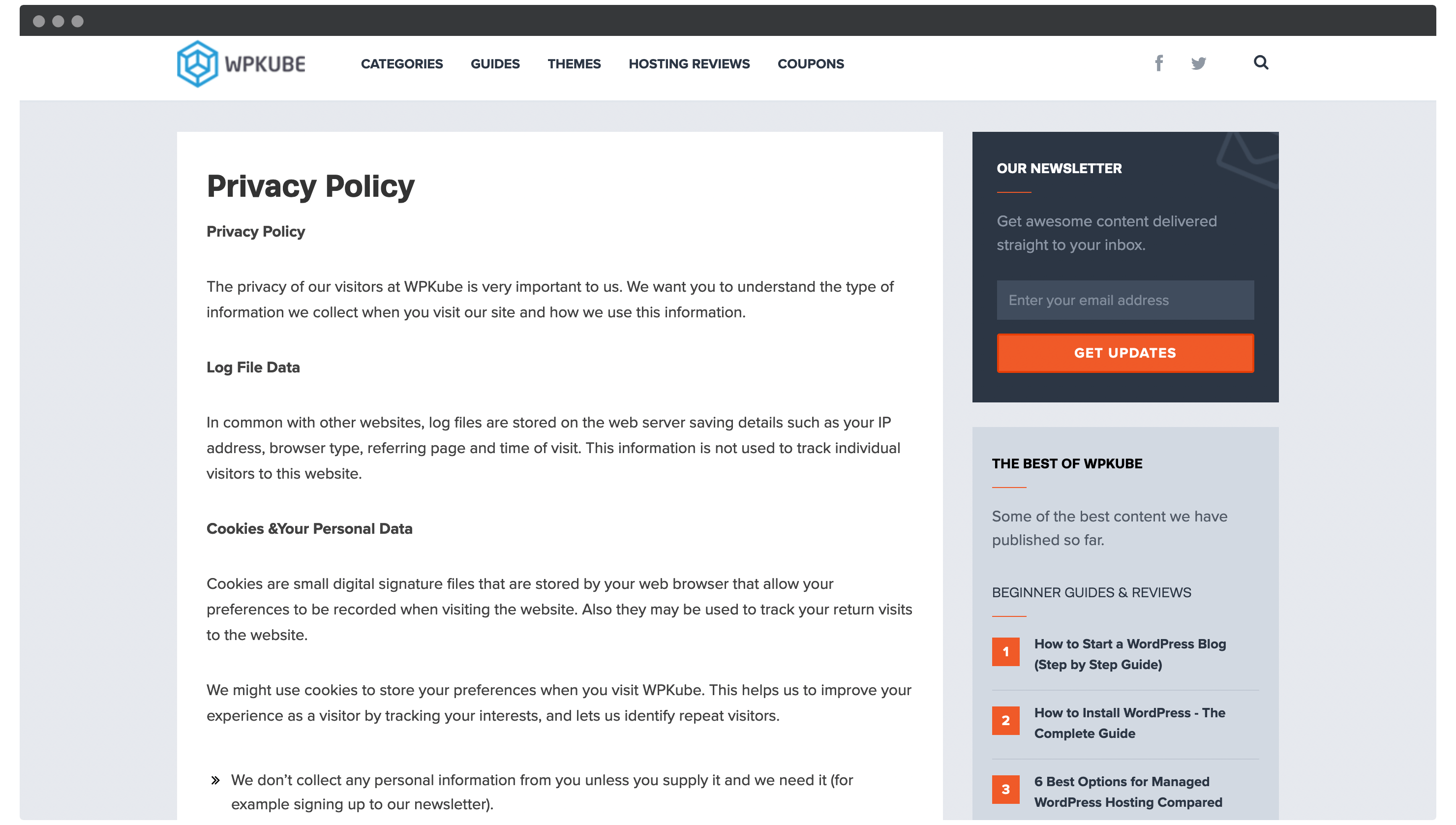
It’s also worth noting that whatever solution you decide to use, your privacy policy should reflect that you’re collecting user information, and in what capacity.
How Do You Set Up a Newsletter? (2 Approaches)
Regardless of the solution you choose, setting up a newsletter within WordPress is a breeze. Next, we’ll go through two ways to set up a newsletter, both within WordPress, and with a third-party platform:
- Use an email marketing platform.
- Install a dedicated WordPress email subscription plugin.
Without further ado, let’s get started!
1. Integrate an Email Marketing Platform Into WordPress
You’re likely going to have an easier time integrating a WordPress email subscription plugin than other methods. Let’s outline the steps you’ll need to take.
Step 1. Choose a Solution
First off, you’ll want to choose the right platform for your newsletter. Note that we’re not talking about list building per se here. Some plugins such as Thrive Leads (our review) have a lot of cross-over functionality, but aren’t focused on email marketing.
The great news is that we’ve covered many of the top platforms in previous articles:
- For a great roundup that is still valid today, check out Email Marketing Services: 8 Popular Platforms Worth Considering.
- If you’re looking for a specific review on a front-running email marketing solution, SendinBlue Review – Best Email Marketing Service for WordPress? will be required reading.
- You’ll likely end up comparing platforms, especially Mailchimp. If so, you’ll want to read GetResponse vs Mailchimp: A Detailed Comparison Review.
Once you’ve narrowed down your options and purchased a plan, you’re ready to connect it to WordPress.

We’ve chosen Mailchimp for the rest of the steps, given that it has a free plan. However, you’ll be able to replicate the steps in most other email marketing platforms.
Step 2. Connect Your Email Marketing Platform to WordPress
Once you have a plan in place, the next step is to make sure it can talk to WordPress. This usually requires two elements:
- An API key from Mailchimp.
- A plugin to connect your email marketing platform and WordPress.
While Mailchimp offers a plugin to connect it to WordPress, it’s out of date. As such, we can’t recommend it. Instead, if you search the official WordPress Plugin Directory, there a number of third-party plugins available (we recommend the Optin Forms plugin).
This blurs the lines somewhat between a WordPress email subscription plugin and a standalone solution. In short, it’s simply a way to connect the platforms together, rather than letting you manage everything within WordPress itself.
Regardless of the plugin you choose, you’ll need an API key. In Mailchimp, this can be found in the Account > Extras > API keys page:
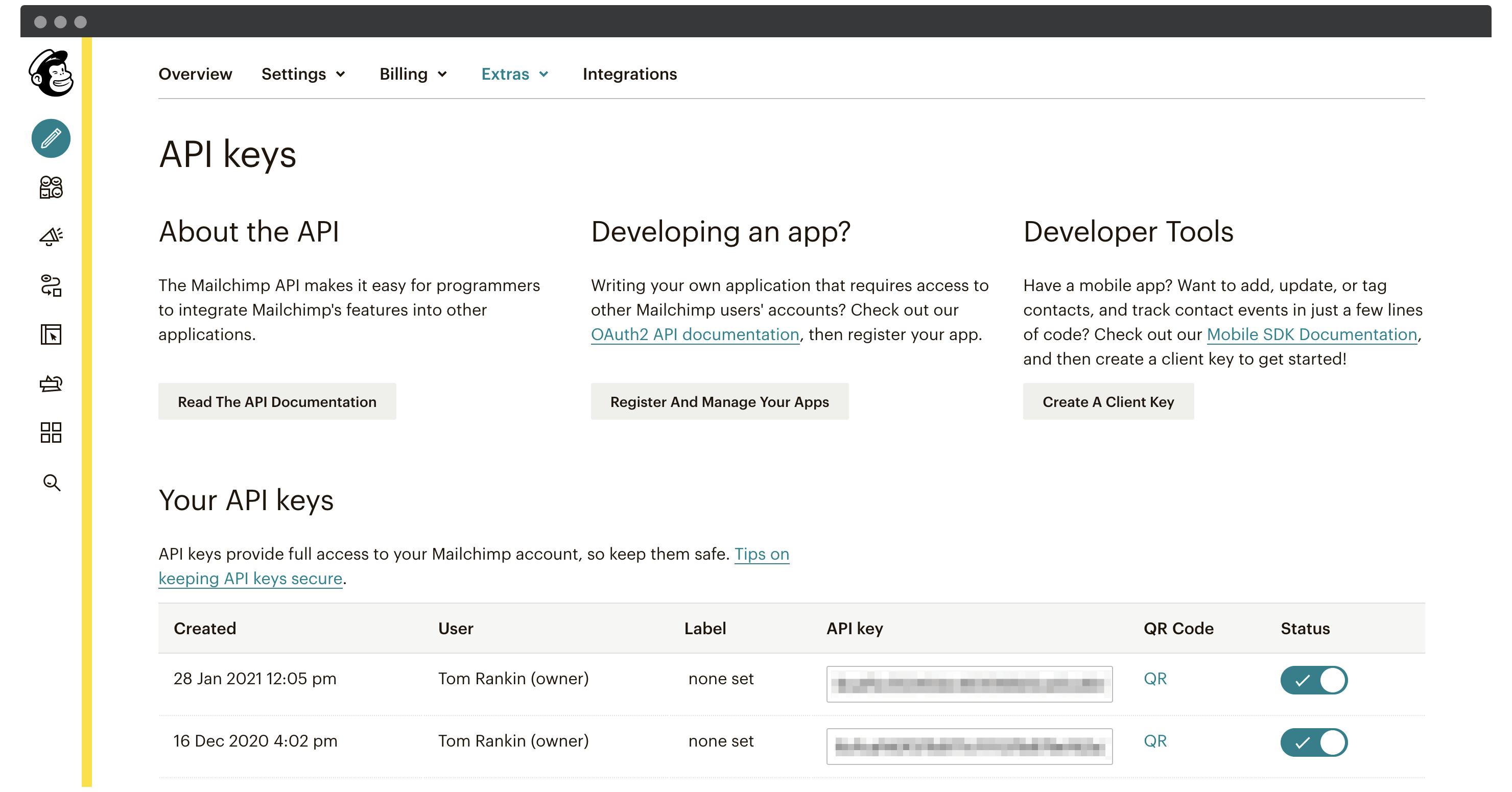
Here, simply click the Create a key button, and Mailchimp will generate an API key. Once the screen refreshes, you can copy the API key string, and paste it into the corresponding field within your WordPress plugin:

Once you save your changes, the screen should refresh, and you’ll be able to connect your site’s forms to your email marketing platform.
Step 3. Embed Signup Forms or Connect Your Existing Ones
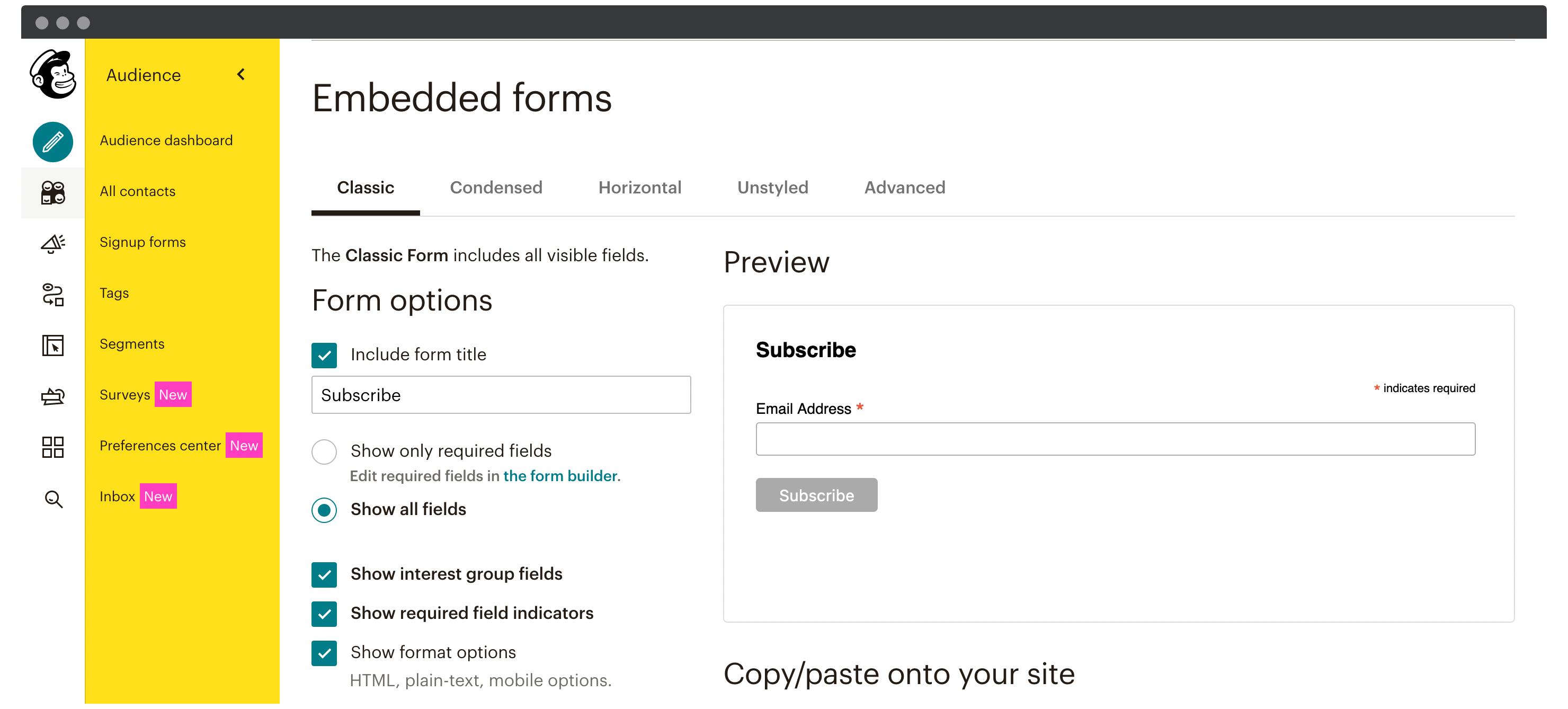
The final step is to get subscriber data into your third-party list. Most email marketing platforms have a few ways to do this, Mailchimp gives you the following:
- A dedicated Mailchimp Block if you’re using both Jetpack and the Block Editor.
- Various add-ons specific to some WordPress contact forms, such as extensions to Ninja Forms and Contact Form 7.
- Embed options for Mailchimp-generated forms.
All of these options are well-documented, and are intuitive to use. However, we’d opt for a WordPress-specific solution, such as a Block or plugin over an embed form.
2. Install a Dedicated WordPress Email Subscription Plugin
You’re likely going to have an easier time integrating a WordPress email subscription plugin than other methods. Let’s outline the steps you’ll need to take.
Step 1. Choose a Suitable Plugin
There are a number of different WordPress email subscription plugins available. You’ll find Newsletter, the Email Subscribers & Newsletters plugin by Icegram, and many more.
However, we recommend a solution that’s been featured on the WPKube blog before: MailPoet:
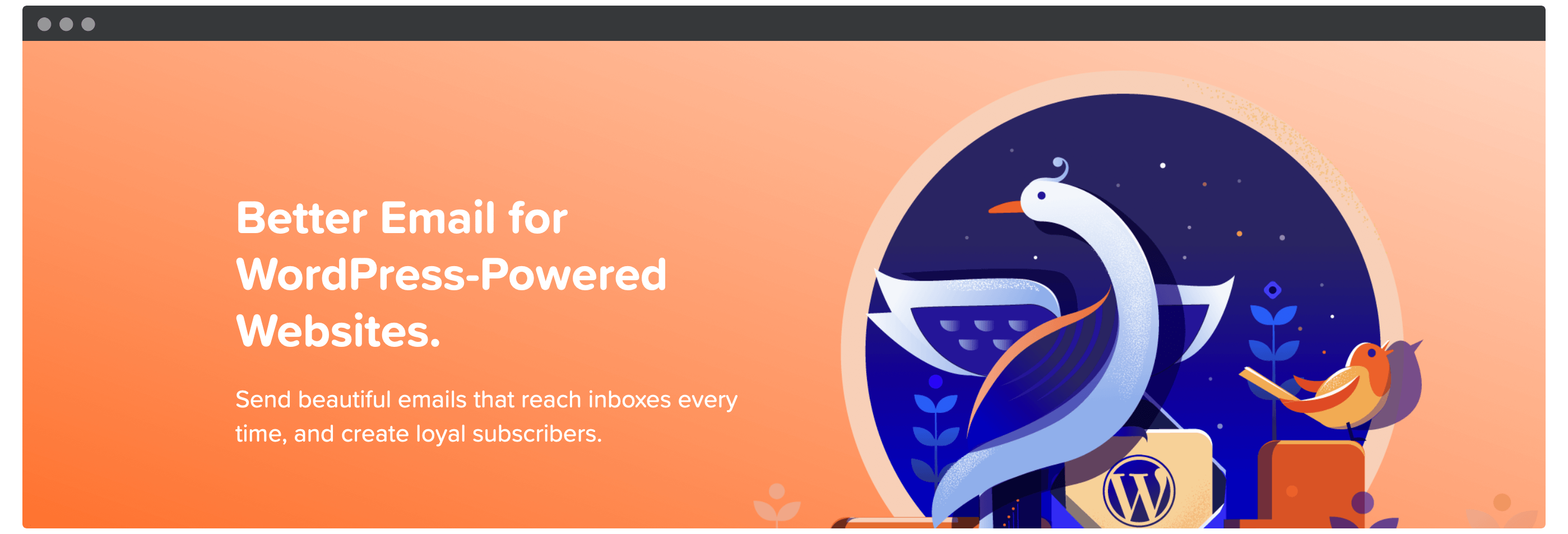
You can read more about why this plugin is so well-recommended, but in a nutshell, it has great support, a sturdy set of features and functionality, and also has a free tier for sites with under 1,000 subscribers:
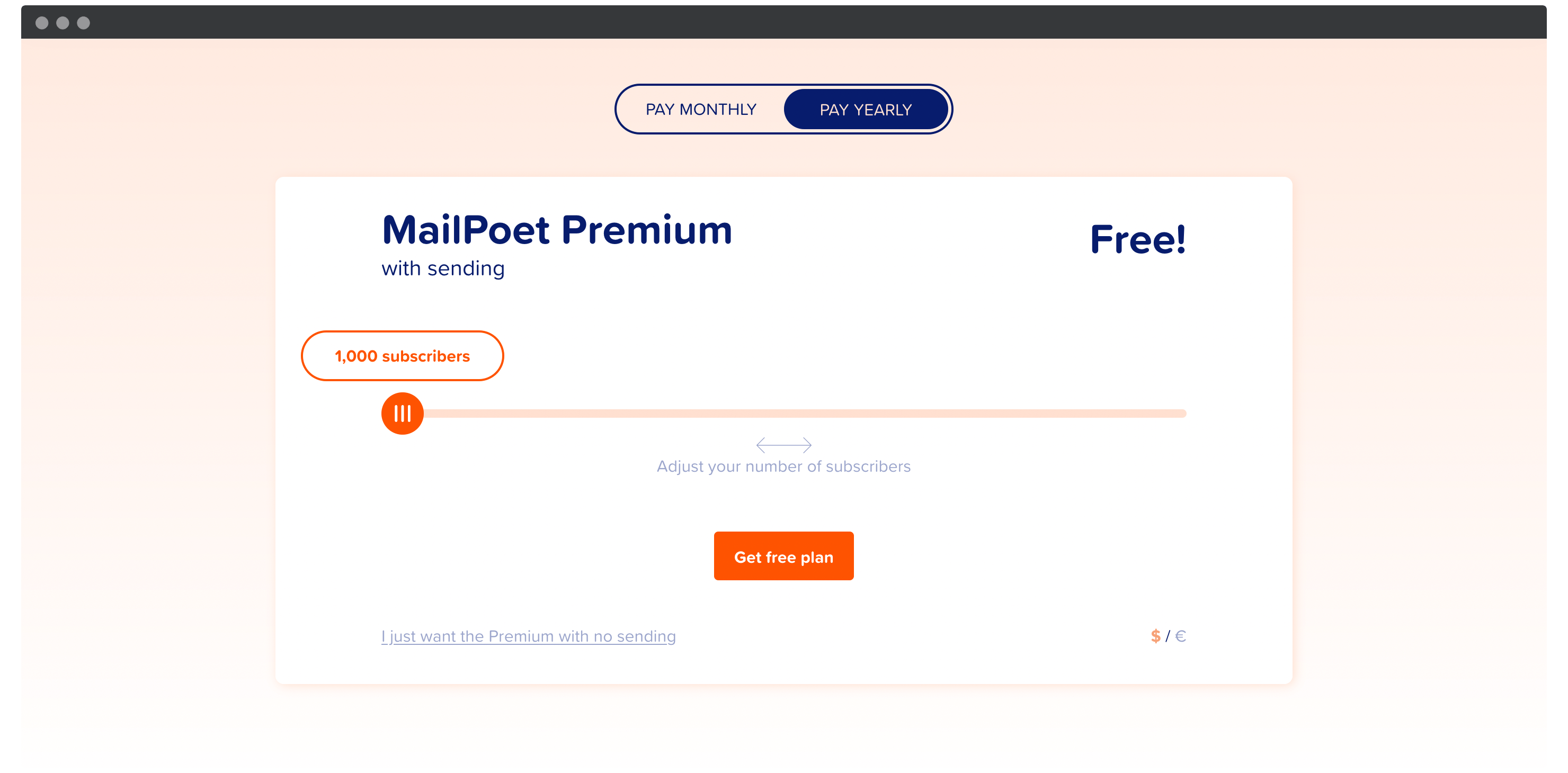
Of course, you should choose the right solution for your needs. Given that most plugins have a free version or tier, we recommend checking out all of the options available on a local testing site. Once you’ve made your choice, it’s time to get everything set up.
Step 2. Install the Plugin Within WordPress and Optimize Its Settings
To get up and running with any WordPress plugin, you can install and activate it as you usually would. You’ll then notice a new MailPoet admin panel within your WordPress dashboard:
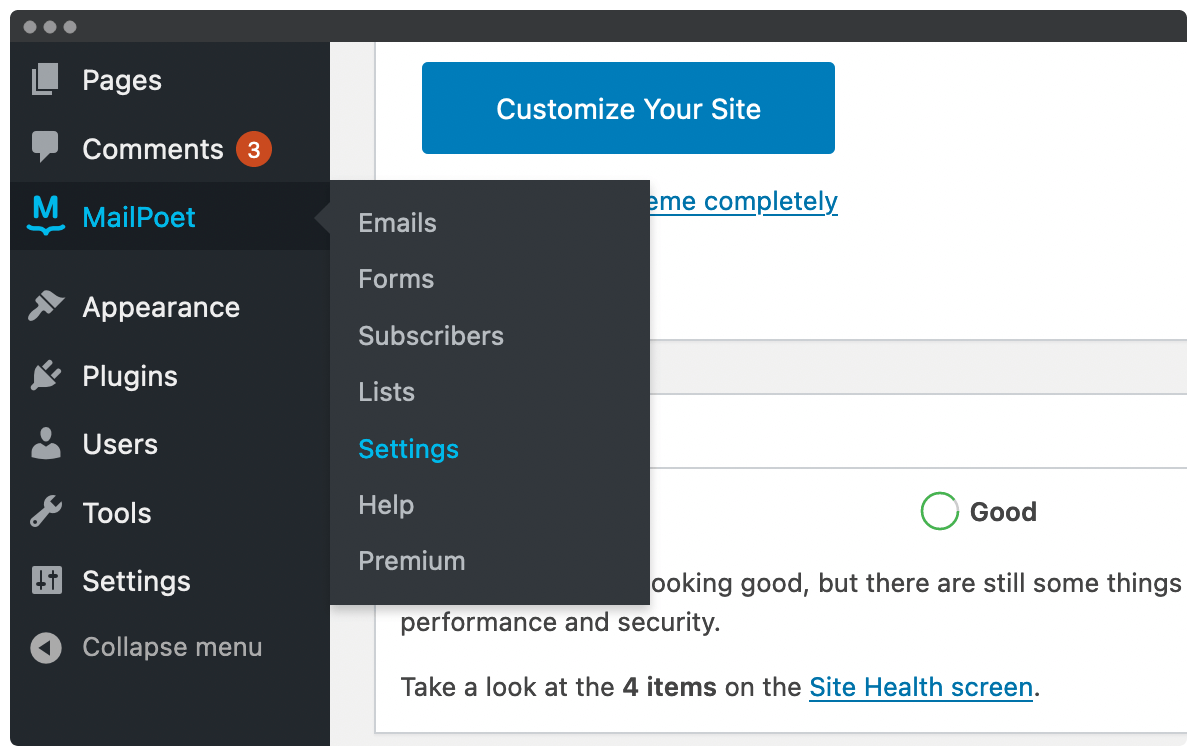
From here, you’ll want to head to the MailPoet > Settings screen. This will walk you through the setup of the plugin:
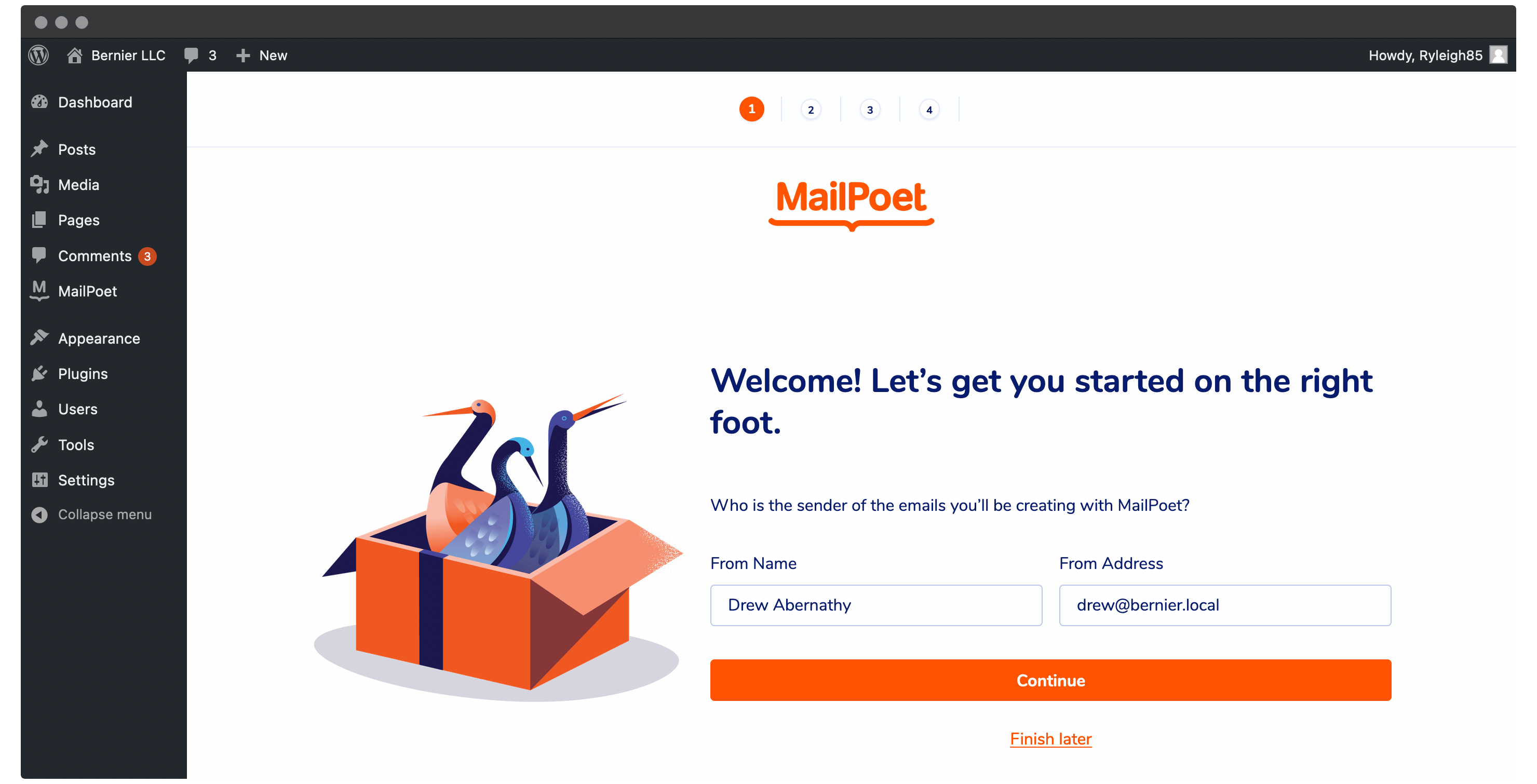
Once you’ve finished the onboarding process, you’ll be taken to the MailPoet > Email screen, where you can begin to work on your next newsletter:

This is a much more straightforward option than using a third-party service. In the next section, we’ll talk about whether it’s something you should consider.
Should You Implement a WordPress Email Subscription Plugin?
Overall, whether you use a WordPress email subscription plugin or an email marketing platform is down to your needs and expertise.
If you’re comfortable with WordPress, and you don’t want the hassle of integrating another service into your site, a plugin such as Newsletter or MailPoet is going to be ideal. However, your WordPress databases could skyrocket in size, and this could have an impact on resources across your entire site.
In contrast, an email marketing platform requires more setup to begin with, but practically manages itself in the long-run. What’s more, you’ll have arguably better send rates (although plugin options don’t necessarily have this problem).
In a nutshell, if you’re happy with your third-party service or dedicated plugin, stick with it. However, if you’re new to the game, consider how hands-on you’d like to be over the long-term, and make your decision accordingly.
In Summary
Newsletters represent an old way of marketing to customers, especially with social media being ubiquitous. However, in our opinion, there’s no better method of contacting qualified customers. As such, you’ll want to consider implementing a solution for your site.
In this post, we’ve looked at third-party email marketing solutions such as Mailchimp. We’ve also run the rule over WordPress email subscription plugins such as MailPoet. Overall, either option is great for WordPress site owners – all you need to do is get one up and running.
Do you already run a WordPress newsletter, or has this article convinced you to take the plunge? Let us know in the comments section below!








Leave a Reply